“Hey, want to know how to make a small fortune by buying a boat?” the old deadpan joke begins. “Start with a big fortune!” While this was probably some sidesplitting stuff back when Coca-Cola still had cocaine in it, there’s the familiar stigma that still rings true: boats (and thereby personal watercraft), are an expensive, superfluous purchase. We’ve even joked that a motorcycle could be justified as a way to cut fuel costs or shave precious minutes commuting. But a PWC? Nope. It’s a toy.
And while people will always want toys, the extravagance of purchasing a new watercraft makes wringing the most value from one’s dollar all that more important. Highlighting what features improve the ride, comfort, use and overall experience are necessary to elevate one brand or unit above the others. Sea-Doo of course, rocked the entry-level price point with the introduction of the Spark late last year. And while the lightweight Rec Lite unit is a fantastic entry point for many (so much so that it earned The Watercraft Journal’s 2014 Watercraft of The Year award), it doesn’t fit every need.
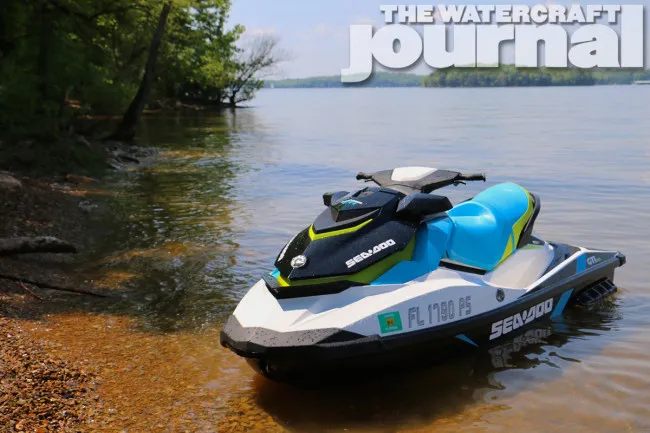
We’ve always enjoyed Sea-Doo’s GTI platform and its varied package offerings, from the opulent GTI 155 Limited to the hard-hitting supercharged GTR 215, down to the playful GTI 130 SE and 155 SE. So when Middle Tennessee’s biggest Sea-Doo dealer, America’s Motorsports offered us a chance to let loose on a new 2015 GTI 130, we couldn’t help but take them up on the offer.
The second highest-equipped unit in the Recreational segment for BRP, the GTI 130 enjoys the benefits of sharing good genes with the aforementioned units. Beginning at $9,299, the 130 goes without several additions that the SE (Special Editions) offer, such as VTS (Variable Trim System), folding swim step or a depth reader.
Above left: Storage on the GTI is ample, with 30.8 gallons split between the large bow stowage and the deep glovebox. Above right: The glove box is big enough to fit a couple bottles of water, a bottle of sunscreen and a pair of sunglasses.
Rather, the 130 remains explicitly frills-free, that is for a Sea-Doo. All Recreation-and-up units come standard with Sea-Doo’s iBR (Intelligent Brake & Reverse), iTC (Intelligent Throttle Control), and a GPS-informed speedometer. The GTI also shares the same single-piece saddle, smartly contoured narrow at the knees and broader in the seat. A gentle bolster breaks up the bench into a slight tiered arrangement, elevating the second and third riders for stadium-like seating. For the rearmost rider, a smartly designed handrail rises up to meet their grip without rubbing on legs.
Riding on a 132.6-inch long platform first introduced in 2011, the GTI’s hull is a reliably stable three-seater, managing to be both steady and playful when directed. When engaged in “Sport Mode,” the 1,494cc Rotax 3-cylinder answers the call with sharper throttle response and a lively torque curve that hides its entry-level pricing. The moderate V-hull features a strakeless bottom, freeing up the three-seater for more playful slides and horseplay. But when cruising is the course, the GTI quickly comes to plane and tracks true even through mild lake chop.

While operating under “ECO Mode,” we’re all but certain you’ll run about of daylight before the GTI will empty its 15.9-gallon fuel tank. The GTI’s default “Touring Mode” is also notably conservative, but offers a nice medium between the aforementioned Sport and ECO settings. And don’t worry, this naturally-aspirated machine runs happily on 87 octane “cheap stuff,” so there’s no fear of breaking the bank while filling it up.
A new addition for 2015, is the new RF DESS key that improves upon the outgoing design with a new ball-and-socket mount, allowing for easy and quick starts every time. Even at full throttle, the only sound resonating in your ears will be the whipping of wind and the laughter coming from your passengers because Sea-Doo’s D-Sea-Bel system (decibel, get it?) combines a “series of resonators and vibration-absorbing components” to mute the GTI’s exhaust note, allowing for a quiet, enjoyable ride.
Above left: Two of Sea-Doo’s most praised features include the use of digital “fly-by-wire” electronic throttle control, iTC, and iBR. Above right: iBR, Intelligent Brake & Reverse allows riders to come to a halt in half the distance of non-brake equipped watercraft.
As is with all of Sea-Doo’s 2015 lineup, most dramatic changes to Sea-Doo’s Recreation series were the addition of very polarizing color schemes. Available in either Manta Green or Maldives Blue, the GTI 130 is splashed with some vibrant hues sure to catch your eye. The blue is broken up with a black hood and Manta Green highlights, and we actually found the Maldives Blue very pleasant in person and find it a fun departure from the typical primary colors found on so many other machines.
We expressed concern whether sales of the Spark were “cannibalizing” those of the GTI, to which America’s Motorsports Chris Watts assured that, “while the Spark is a great seller and gets people in the door, many find that they want a more stable craft with more storage. We almost always get these people on a GTI. They love it.” And sure enough, the GTI lineup remains some of Sea-Doo’s most popular watercraft for those same reasons.
Special thanks to America’s Motorsports for use of the 2015 Sea-Doo GTI 130.





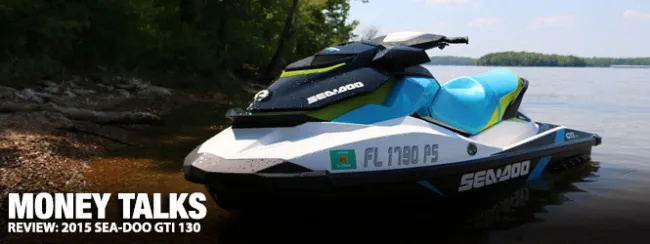
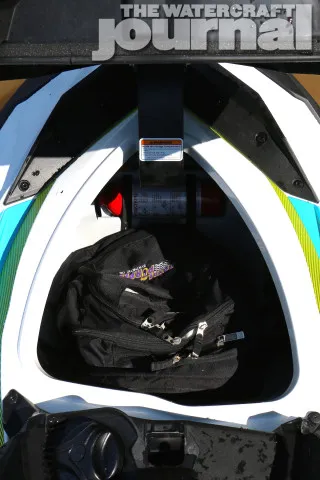



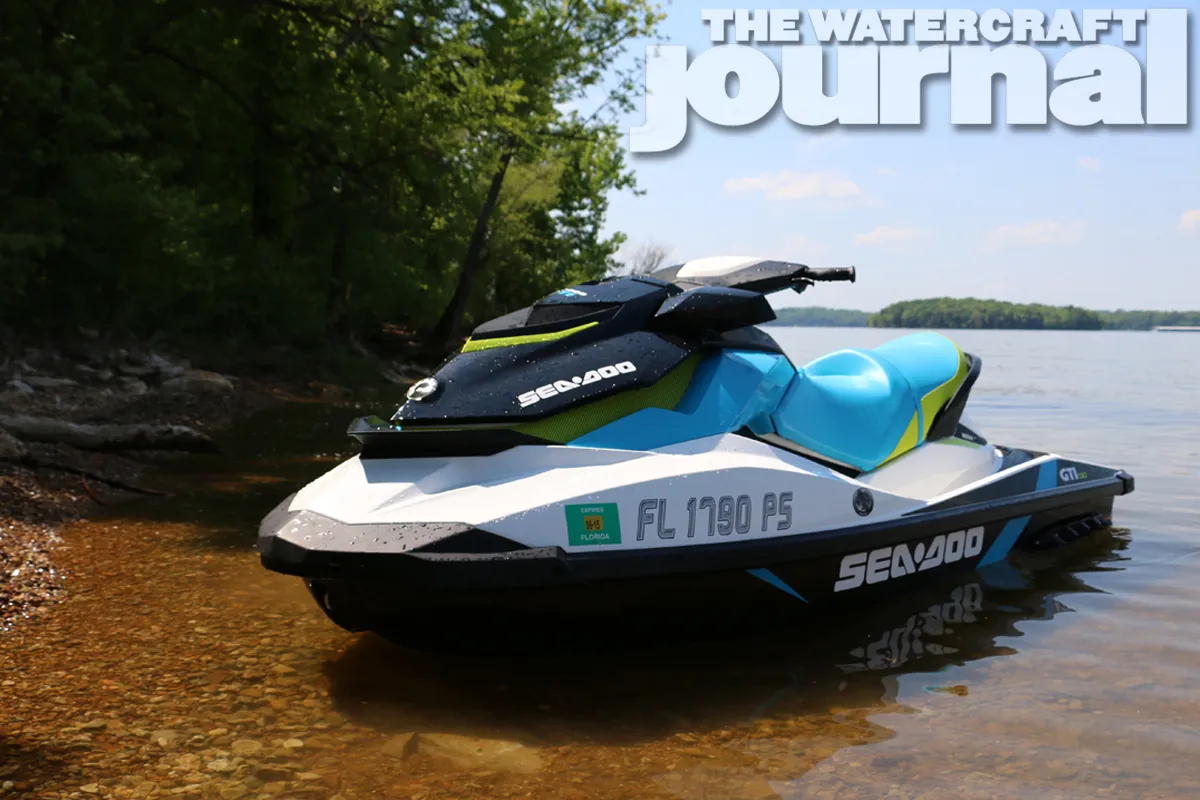

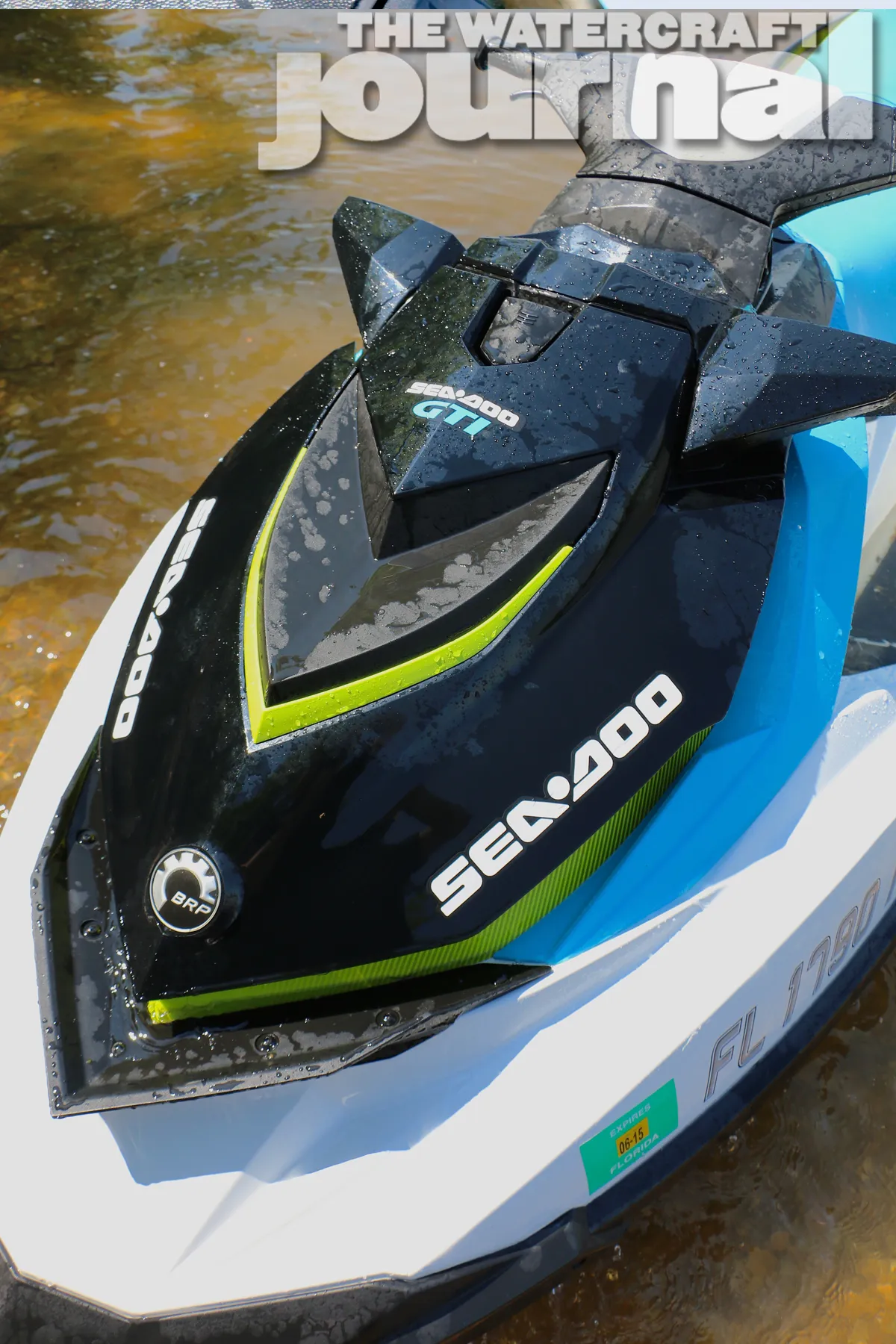
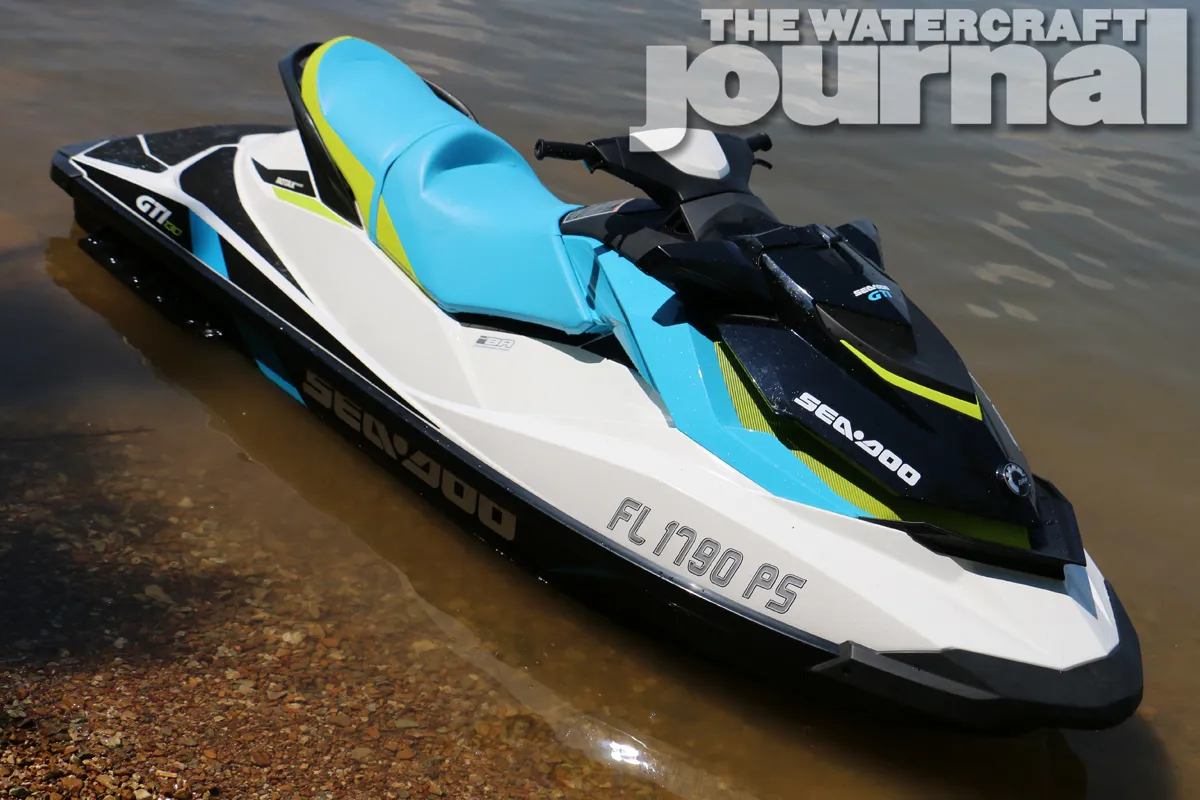

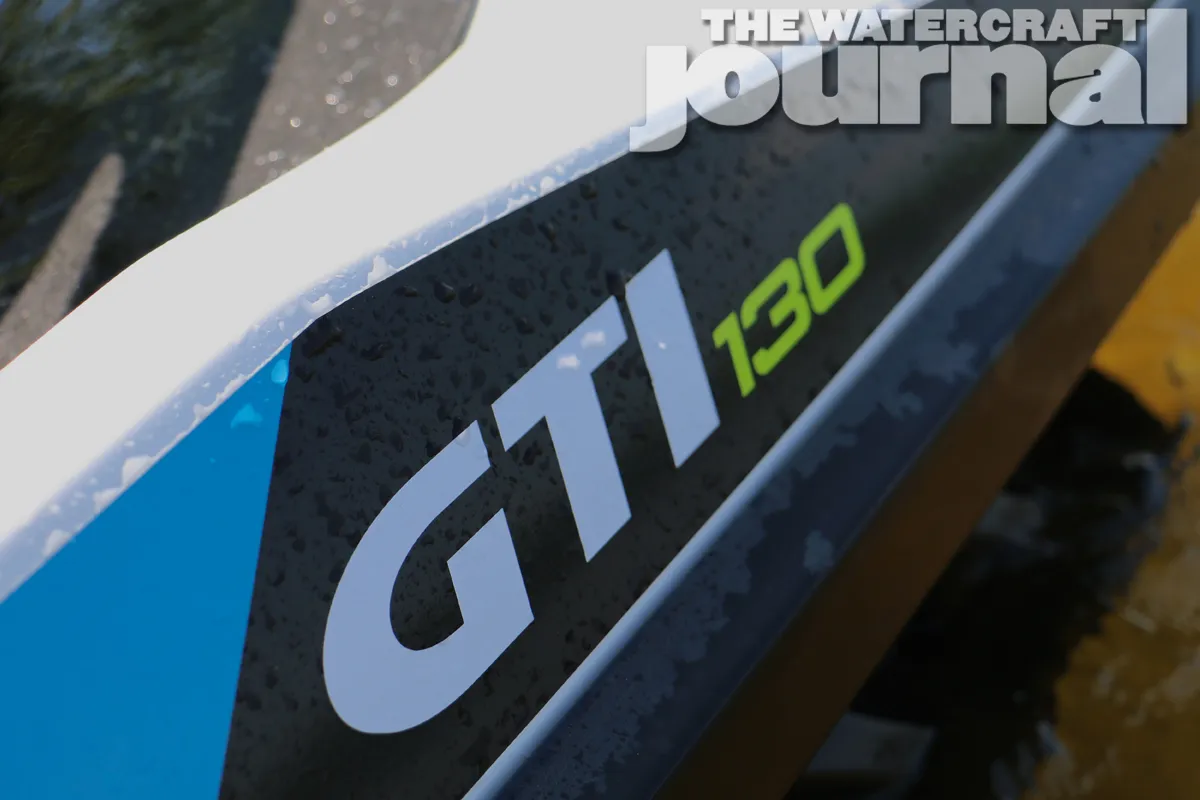

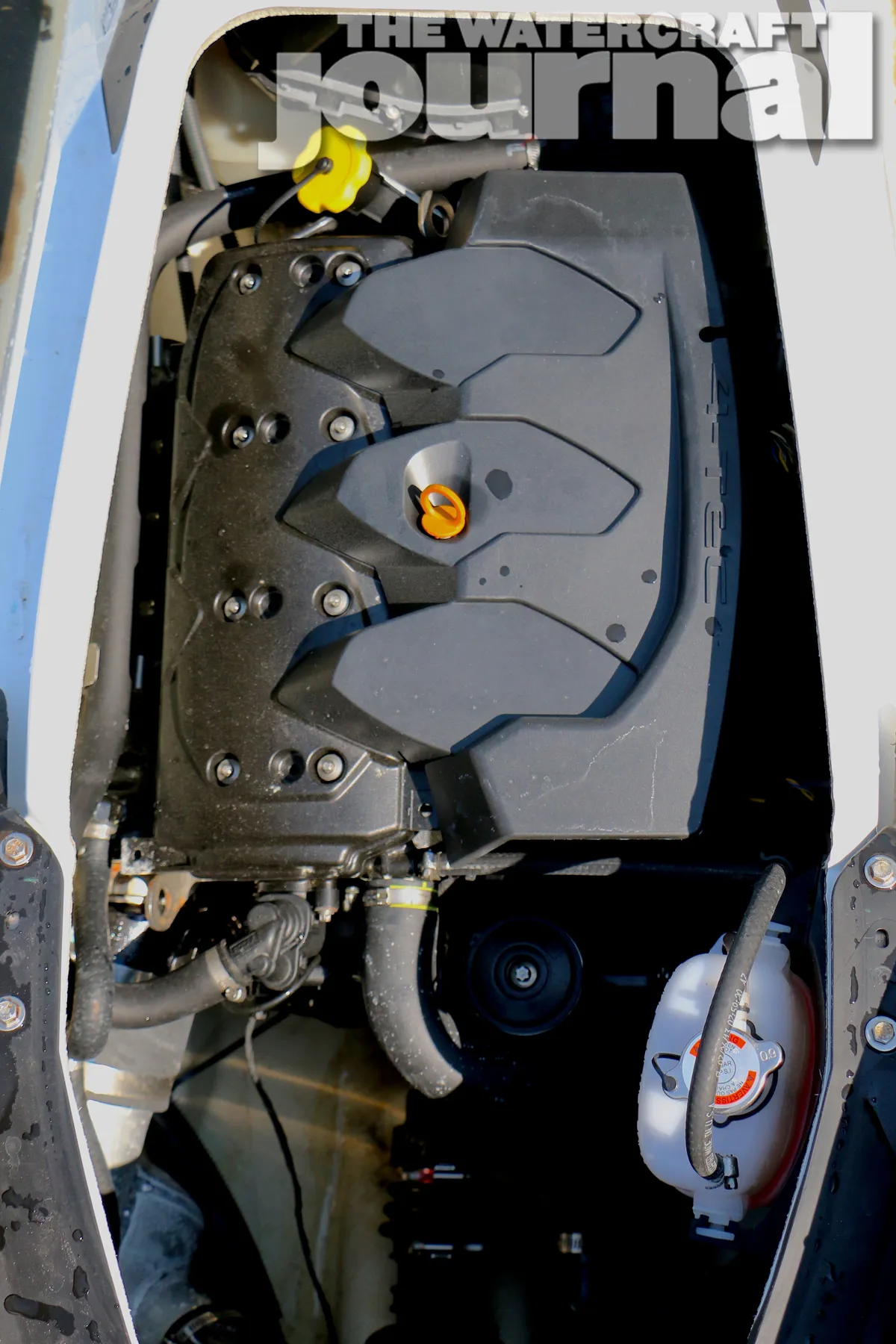
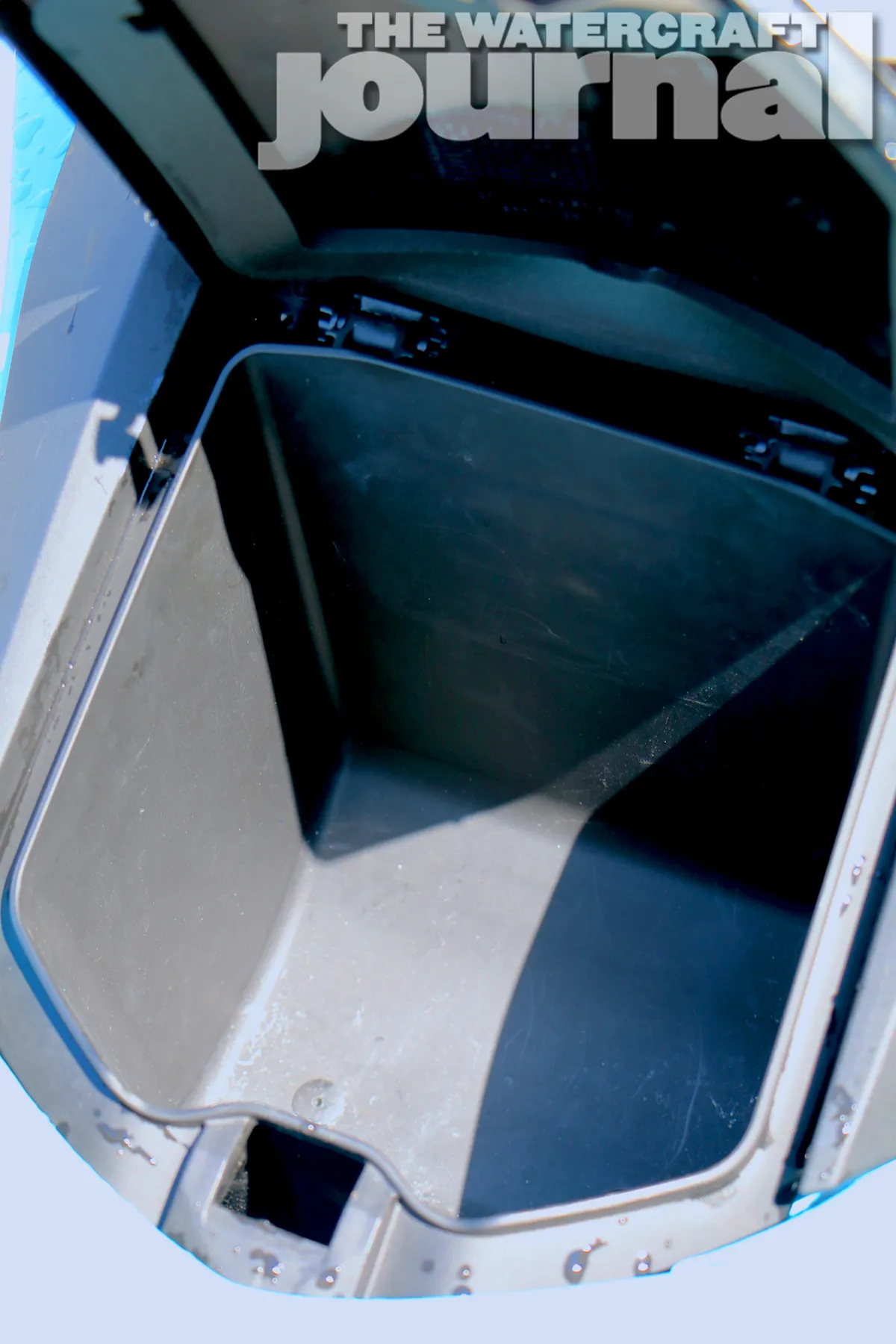
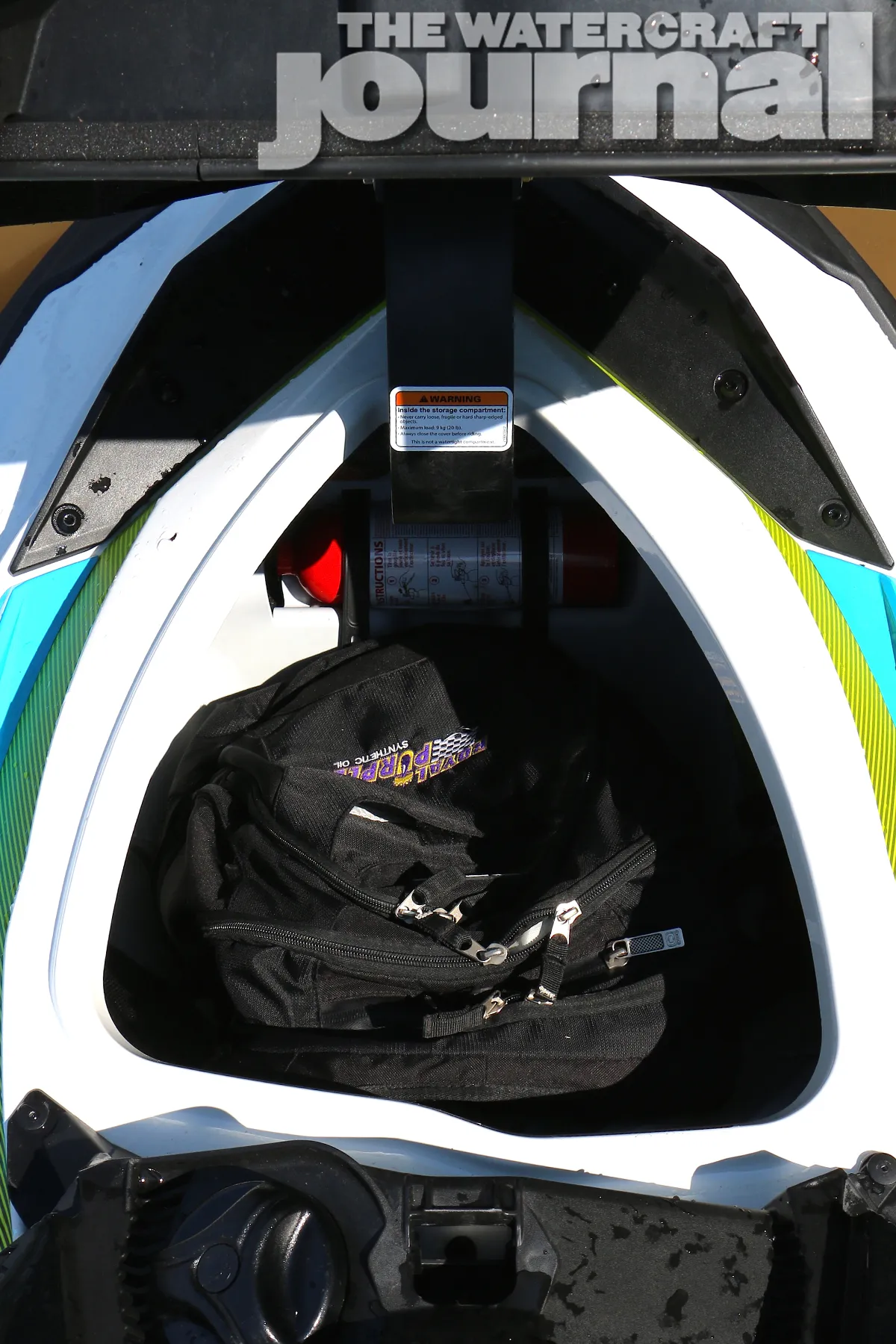
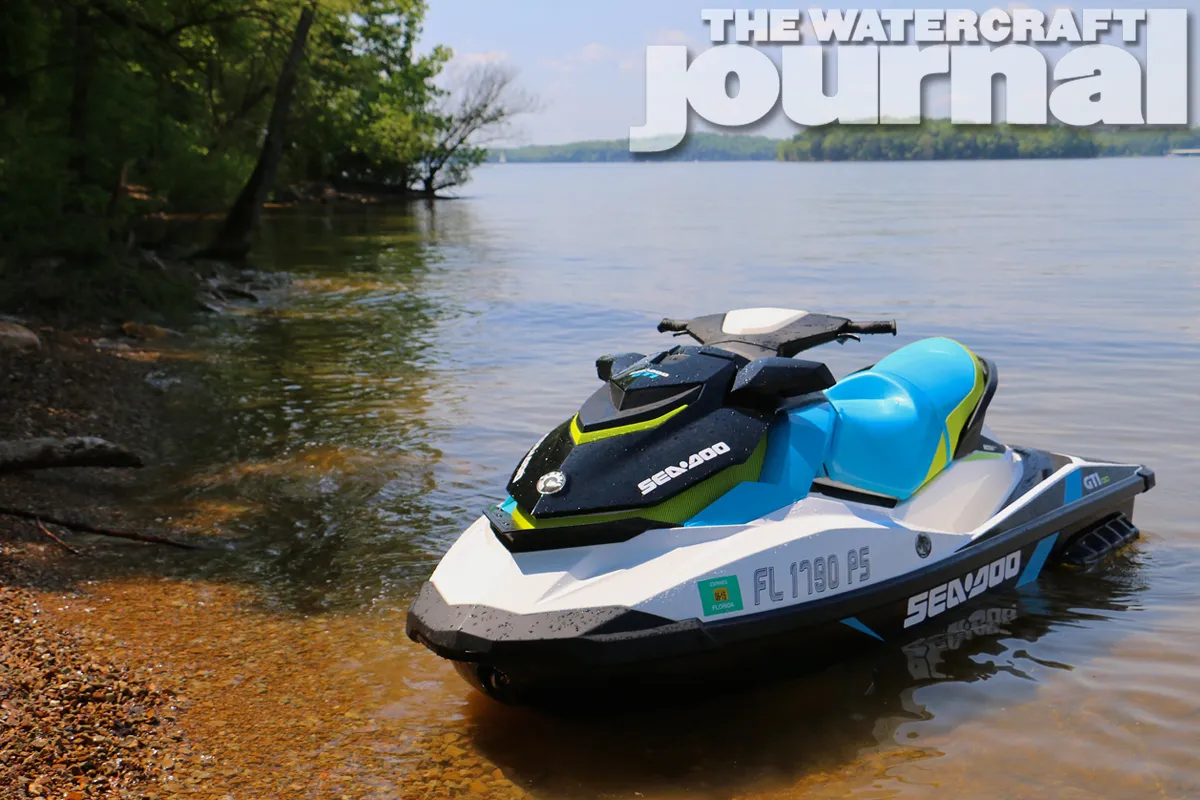
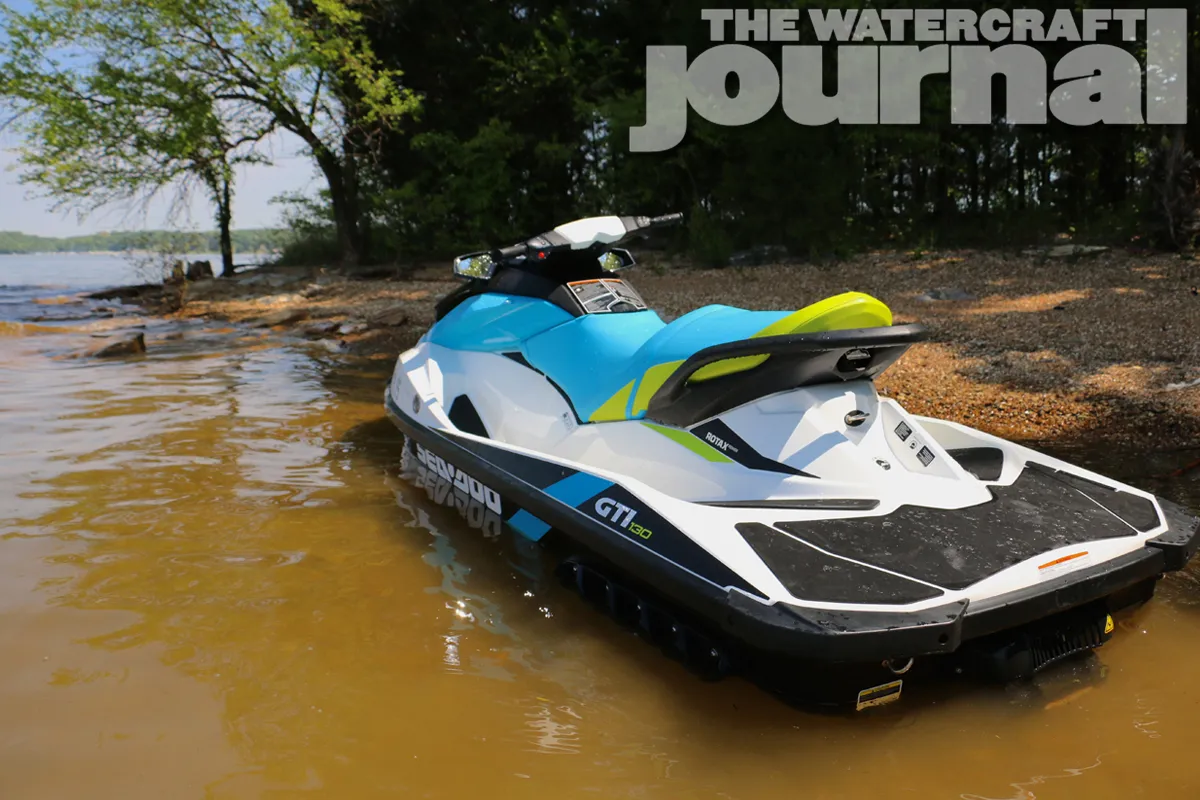

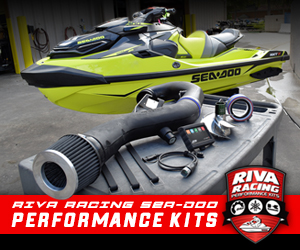
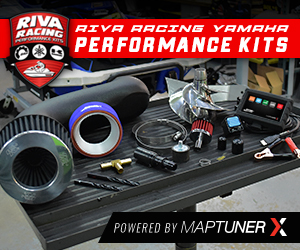

I have 2012 Gti which is my first foray in the PWC world. I sold my boat as it was too much hassle setting up and organising other people to come along when I wanted to go fishing. I looked around and settled on the Seadoo over the Yamah VX . Mainly due to the reviews I had read at the time between the two models.
I haven’t regretted my decision and have had a real blast and there’s enough speed to put a ear to ear grin on your face.
I’ve been impressed with the fuel economy over my old 130 Yamaha S/W. Series outboard. Now I get about 3 trips out where I used to be able to a afford 1. No comparison between boat and PWC I know but that’s where I came from.
My Seadoo setup for fishing with cradle and fish box on rear and a Raymarine Chartplotter sounder worth it weight in gold.
Some of my best catches on the ski. I think that’s partly due to its small footprint that does frighten skitterish fish as much as a larger boa and more probably you can scoot around a wide area for use of little fuel. I typically do around 30 – 40 nautical miles on trip.
I’ve send surf lifesaving clubs on Australia’s Gold Coast use these as rescue craft they tow a for want of better word a “body board” behind them. So that’s a good indication of ability of the craft if chosen as rescue craft they must be pretty good.
My only gripe and it’s a serious safety issue as I found out first hand with a passenger when I took a tumble close to shore and trying to get two people back on the craft in the chop and speed of tide became a problem. Anyone can jump on when you are able to plant your feet on the sea floor but it’s different when you are floating with just neck above the water. In a nutshell I purchased and had fitted a boarding step which cost $600 NZ !
Surely, the boarding step is not an luxury but rather should be treated by the manufacturer as being water safety responsibility. That’s the only thing I would change with this model.
Fishing off these craft is great but you do have to be careful when fighting some of the larger fish and when nature calls balancing becomes an art. 🙂